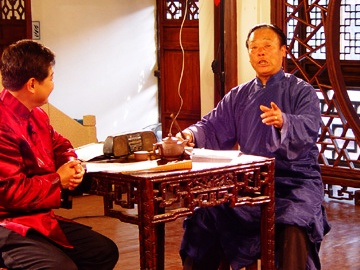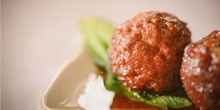Kunshan String-based Xuan Juan
(chinadaily.com.cn)
Updated: 2013-07-03
Xuan Juan is a unique genre of folk variety shows in the villages of Zhouzhuang. It is similar to Tangming (a type of Kun Opera), with traces of storytelling and Suzhou ballad performances. Xuan Juan may be classified into string-based and wooden knocker-based types, according to the number of performers and the complexity of their performances.

The former is performed by a six-member team, who play the Erhu (a two-stringed Chinese fiddle), the Chinese tri-chord sanxian, flute, wooden knocker, and a copper chime stone. It follows traditional Kun Opera music for voices and the folk music of Four Season Melody, along with local Shen Opera and Xi Opera tones to provide melodious music. The leading performers will wear long robes, hold folding fans and a woodblock, and talk and sing in vivid appearances.
The most popular Xuan Juan dramas are Liang Shanbo and Zhu Yingtai, Qin Xianglian, Gu Dingcheng, and Bai Luoshan. The latter is normally performed by two players. One player will hit the wooden knocker and talk and sing. The other will coordinate to knock the chime stone and pray to Buddha. The performance is very simple in form. The plays are largely short, focusing on the theme of karma and asking people to do good. They are represented by Mu Lian Jiu Mu and Guan Yin De Dao.
Xuan Juan has about 200 years of history. It can be traced back to Zhouzhuang, and spread through Jinxi, Luzhi, Tongli, and Pingpu. When it came to the Republic of China period, the performance art was promoted by Zhang Mutang from Panlong Village, Xu Shiying from Longting Village, and Guo Zhaoliang from Qibang Village. It is played on holidays and slack seasons in farming, and well received by the general public.
To date, along with the development of tourism in Zhouzhuang, Xuan Juan has been gradually explored and promoted as a means of folk art. They are played on major celebration occasions in the town, with famous players invited from Jinxi.
News
Four special holiday dishes to try in Kunshan
Like Christmas Day in the West, it is traditional in China to cook up an enormous feast on Chinese New Year, with dinner tables groaning under the weight of dozens of dishes.


